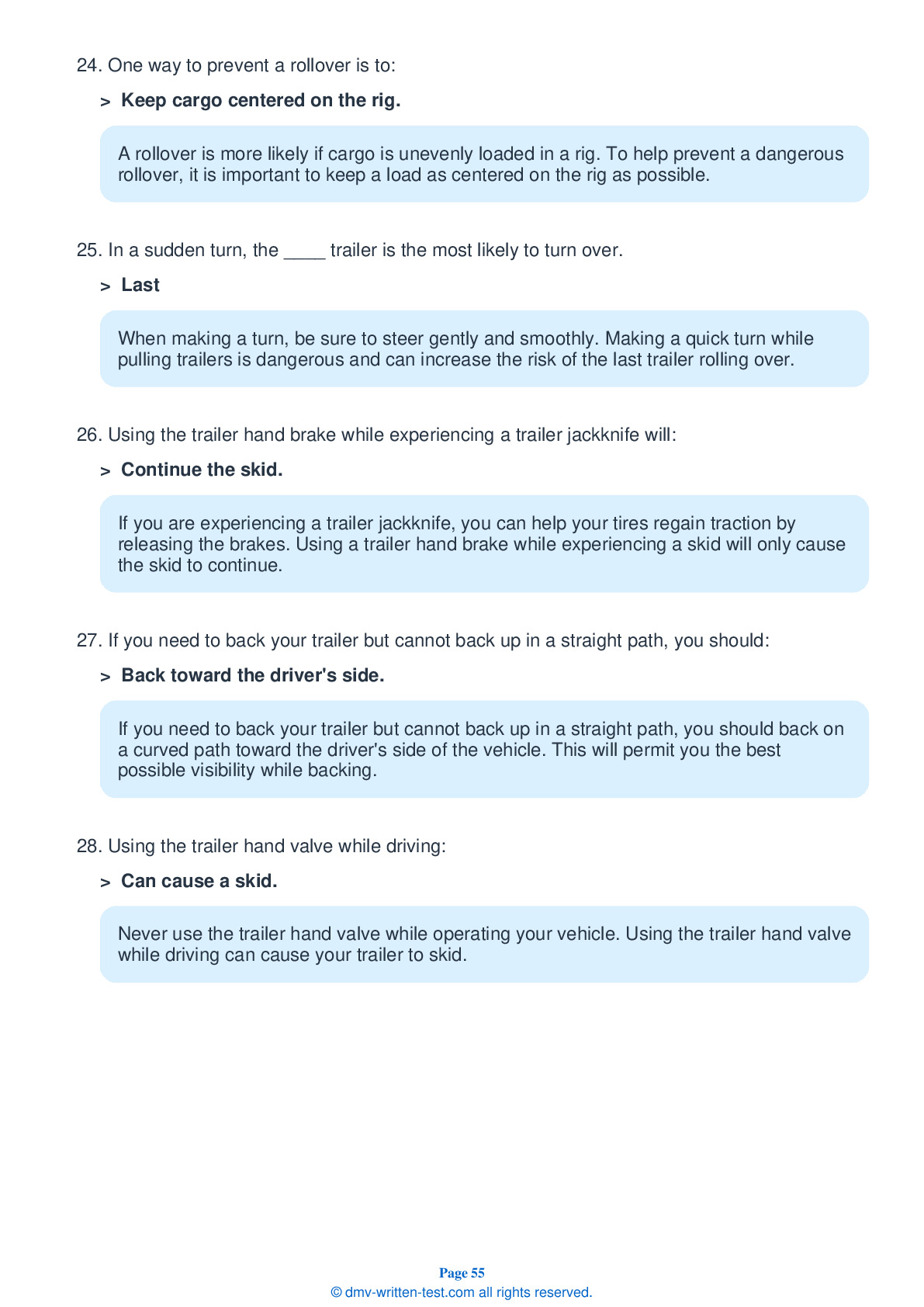Combination
All applicants who are applying for a Class A CDL should be prepared to take the Combination test. This test covers information found in Section 6 of the Commercial Driver License Manual. Section 6 provides the information needed to safely operate tractor-trailers, doubles, triples, and straight trucks with trailers. The test is made up of 30 multiple-choice questions, and applicants will need to correctly answer a minimum of 24 questions to pass. The Combination test is not a replacement for the Double/Triple endorsement test.
Number of Question
Passing Score
24. Trailers with low underneath clearance can present challenges when driving over:
Explanation
Railroad-highway crossings may be difficult to cross when pulling a trailer with a low underneath clearance. In particular, both low-slung units and single-axle tractors pulling long trailers are especially challenging to drive over raised crossings.
25. Before backing your tractor under the trailer, make sure your trailer brakes are:
Explanation
Correctly following the steps to couple and uncouple trailers is vital to safely operating a combination vehicle. Before backing your tractor under the trailer while coupling, make sure your trailer brakes are locked.
26. If a trailer is too high:
Explanation
Before coupling together a tractor and a trailer, you should make sure the trailer is at the proper height. If the trailer is too low, the trailer nose may be damaged. If the trailer is too high, it may not be able to couple correctly.
27. Emergency air lines are often coded with the color:
Explanation
In general, the parts of the service air line are coded blue and the parts of the emergency air line are coded red.
28. All trailers made after ____ must be equipped with Anti-Lock Braking Systems (ABS).
Explanation
All trailers and converter dollies manufactured on or after March 1, 1998 must have Anti-Lock Braking Systems (ABS).
29. If you need to back your trailer but cannot back up in a straight path, you should:
Explanation
If you need to back your trailer but cannot back up in a straight path, you should back on a curved path toward the driver's side of the vehicle. This will permit you the best possible visibility while backing.
30. A trailer will be most likely to swing around when:
Explanation




